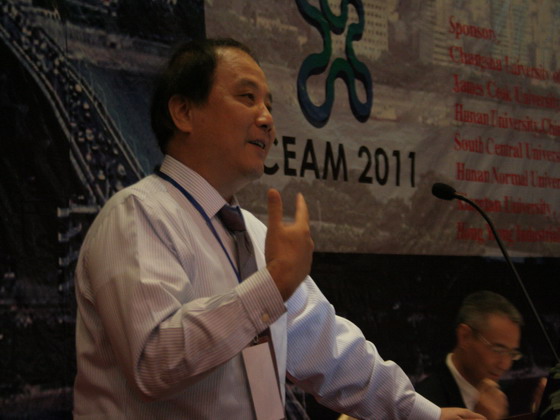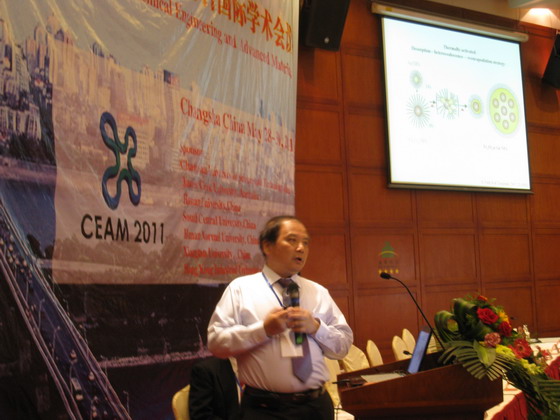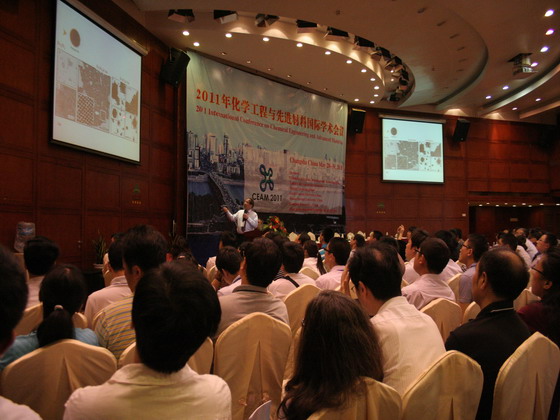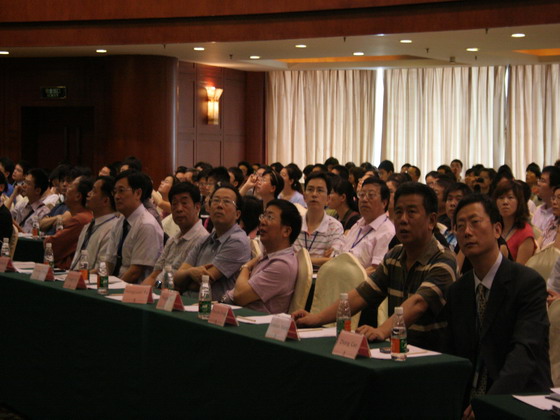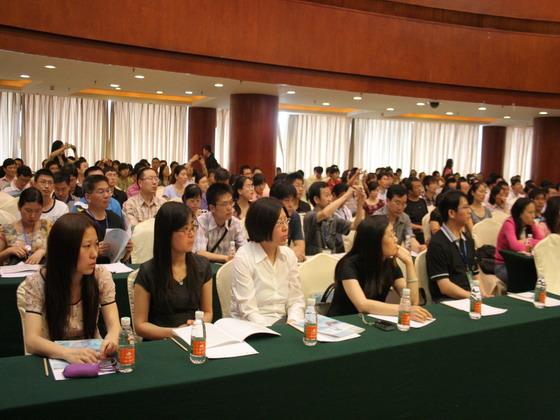5月29日上午8:40,美國紐約州立大學(xué)(State University of New York at Binghamton����,USA)鐘傳建教授應(yīng)邀在我校舉辦的2011年化學(xué)工程與先進材料國際學(xué)術(shù)會議(CEAM 2011)大會上做了題為《Nanoengineered Materials for Green Energy and Biomedical Applications》的主題報告(Keynote Speech)。報告會在長沙市五華大酒店湘江廳舉行,長沙理工大學(xué)副校長付宏淵教授��、長沙理工大學(xué)科技處處長劉永樂教授�、澳大利亞詹姆斯庫克大學(xué)(James Cook University, Australia)何英和教授��、中科院長春應(yīng)用化學(xué)研究所/長沙理工大學(xué)化學(xué)與生物工程學(xué)院院長曹學(xué)強教授����、中科院大連化學(xué)物理研究所孫立賢教授、湖南師范大學(xué)化學(xué)化工學(xué)院院長尹篤林教授��、湖南大學(xué)化學(xué)化工學(xué)院向建南教授�、長沙理工大學(xué)化學(xué)與生物工程學(xué)院常務(wù)副院長楊道武教授、長沙理工大學(xué)化學(xué)與生物工程學(xué)院副院長曹忠教授等出席了報告會����,共有來自美國、英國���、德國�����、日本����、中國等15個國家和地區(qū)的500多名化工和材料方面的專家學(xué)者參加了報告會。
首先����,由大會主席何英和教授介紹了鐘教授的工作經(jīng)歷及研究成果情況。隨后����,鐘教授介紹了納米工程材料在綠色能源方面的應(yīng)用,如燃料電池��、鋰-空氣電池����、太陽能電池,以及生物醫(yī)學(xué)領(lǐng)域方面的應(yīng)用����,如醫(yī)療診斷、疾病檢測���、藥物釋放等。對這些應(yīng)用來說�����,為實現(xiàn)預(yù)期納米級結(jié)構(gòu)功能特性控制的能力是一個巨大的挑戰(zhàn)。鐘教授還介紹了他最近研究的金屬和合金納米粒子的尺寸��、形狀�、成分、結(jié)構(gòu)以及燃料電池催化和生物分子識別的元件���。最后���,鐘教授和與會專家學(xué)者就如何控制納米顆粒尺寸等問題進行了深入的討論,獲得大家的濃厚興趣��。
通過這次報告會���,化學(xué)與生物工程學(xué)院的師生都認為了解了許多納米工程材料及生物醫(yī)學(xué)領(lǐng)域的國際前沿研究動態(tài)����,開闊了眼界�����,增長了見識����,擴大了交流����。
附:鐘教授大會報告摘要和個人簡介:
Nanoengineered Materials for Green Energy and Biomedical Applications
Chuanjian Zhong
Department of Chemistry, State University of New York, Binghamton, NY 13902, USA
Email: cjzhong@binghamton.edu
Abstract:
Nanoengineered materials have found increasing applications in green energy applications such as fuel cells, lithium–air batteries, and solar cells, and in biomedical applications such as medical diagnostics, disease detection, and drug delivery. A key challenge to these applications is the development of abilities to control the nanoscale structures for achieving the desired functional properties. This report will discuss some recent results of our investigations of sizes, shapes, compositions, and structures of metal and alloy nanoparticles and assemblies for fuel cell catalysis and biomolecular recognition.
Brief biography:
Dr. Chuan-Jian Zhong is a full Professor at State University of New York (SUNY) at Binghamton. After his graduate study at Xiamen University, he was first a Max Planck Society postdoctoral fellow at Fritz-Haber-Institute in Germany with Dr. Karl Doblhofer and Professor Gerhard Ertl (2007-Nobel Laureate), and then a postdoctoral scientist at University of Minnesota in USA with Professor L. Miller. Following his postdoctoral work, he was an associate scientist in US Department of Energy’s Ames Laboratory at Iowa State University working with Professor Marc Porter for five years before joining the faculty of State University of New York in 1998.
He is a tenured full professor in Chemistry and Materials Science, and currently serves as associate director of the Institute for Materials Research. His research interests are in the interdisciplinary areas of analytical chemistry, materials science, catalysis, electrochemistry, and emerging fields of nanotechnology. Many of his research projects involve nanostructured materials for chemical/biomedical detection and green energy which have been supported by federal funding agencies such as National Science Foundation, Department of Energy, and Department of Defense, by nonprofit funding agencies such as Petroleum Research Fund of American Chemical Society and World Gold Council, and by industrial funding agencies such as 3M, Honda and UTC Power.
He was recipients of a number of awards, including National Science Foundation’s Faculty Early Career Development Award, SUNY Chancellor’s Award for Excellence in Scholarship and Creative Activities, SUNY Innovation, Creation and Discovery Award, and 3M Faculty Research Award. He is a Guest Professor of Xiamen University and Hunan University. He serves in the Editorial Board of a new nanotechnology journal (Journal of Nanotechnology). He is founder of a nanotechnology start-up company in New York. He has authored over 150 peer-reviewed scientific papers and 6 book chapters. He is an inventor of 10 US patents. He has given over 150 invited talks at international conferences, universities and industries.
